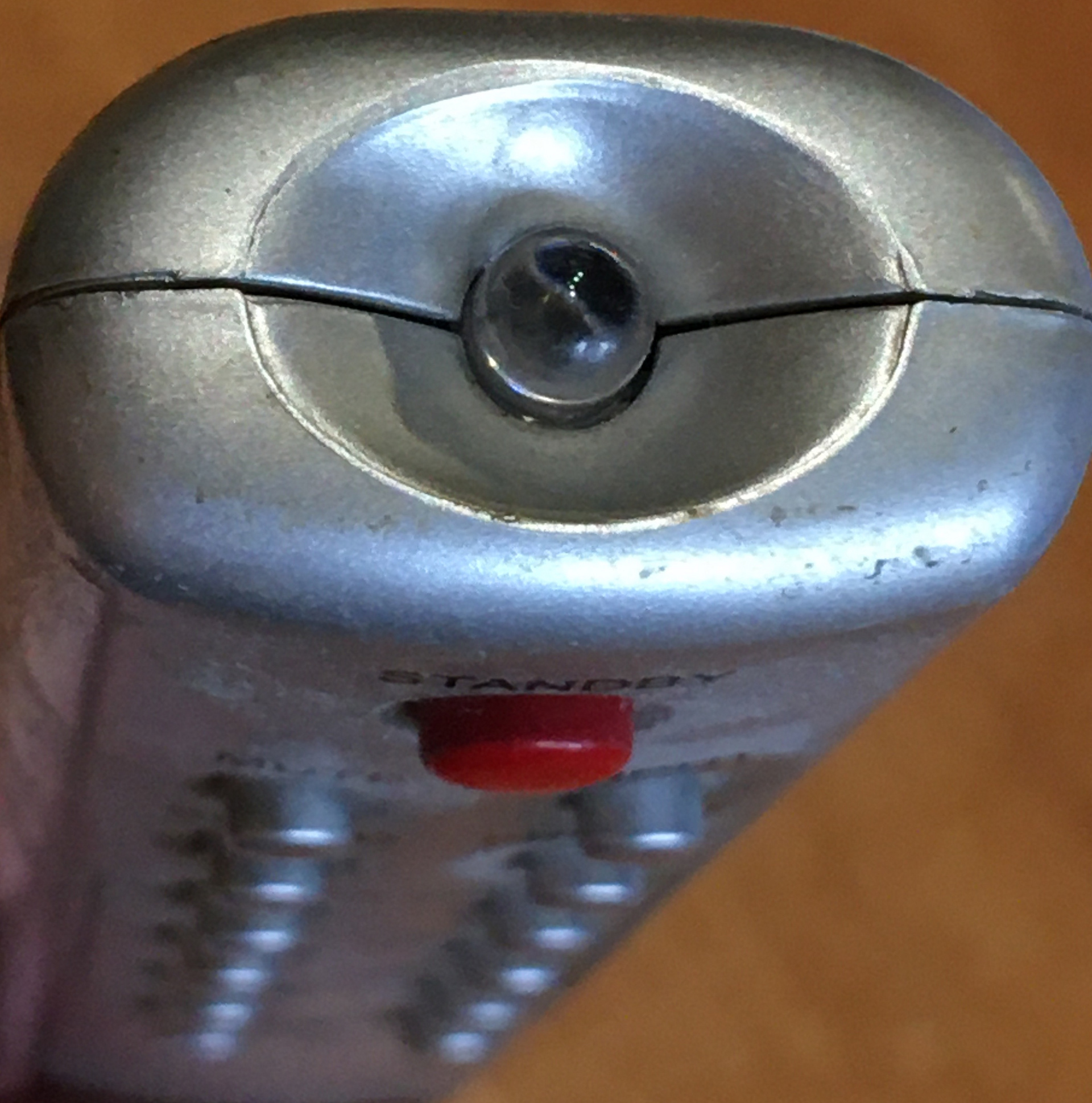Answer the question
In order to leave comments, you need to log in
How to increase the emission angle of an IR LED?
A valuable rare electronic device for me has a shameful IR remote control.
No, the batteries and buttons are in order and the remote itself is quite alive. It was like this from the purchase: in order to control the device from the remote control, it was necessary to position the remote control exactly on the axis of the IR receiver, otherwise it would be a bummer.

All this time I did not use the remote control and controlled the device standing half a meter from me from its panel. Due to the changed configuration of the room, the remote control was needed, but hitting the target of the receiver standing behind is a torment.
I measured the angle of radiation of the remote control LED and it is 20 degrees at most. There is no lens on the LED and the design of the remote control does not provide for its installation. You can find a diagram of the device itself, but there is no remote control diagram and it is not clear which LED is used there.
It is clear that some ordinary one with a generally accepted wavelength, but it is impossible to take and look at the radiation angle in the datasheet.
Question to the radio guru: what modern wide-angle LED would you try to replace the old one with? Or maybe started with a lens? From what?
Mercibo ku in advance.
Answer the question
In order to leave comments, you need to log in
1. You don't need to look for a special special LED. Just unsolder the diode from any remote control from any (even not very modern) TV or video recorder, they are all about the same in the sense that you are interested in.
2. The level of the output IR signal of any remote control is easy to control purely visually, using any modern mobile phone with a camera eye on the back, since these cameras, as a rule, see IR well. Point your remote control at the eye of the camera, press any button on it and watch bright (well, or not very bright) flashes of IR pulses on the mobile screen.
In this way, you can not only determine the performance, but also estimate both the signal strength and the width of the remote control beam. You can also visually compare the output strength of your old remote to that of modern remotes.
3. Your problem, as you described it, may not be the width of the remote control beam at all, but the width of the beam of the IR signal receiver on your device, and this should also be checked. Point the remote exactly at the eye of the receiver exactly along its axis, press the button on the remote and make sure that the command is transmitted. Then repeat this, tilting the remote off the axis of the receiver's eye, but still keeping it pointed exactly at that eye (i.e. somewhat to the side, and more and more to the side). Fix what angle of deviation of the remote control from the axis of the eye of the receiver will lead to the termination of the transmission of commands - this will be the desired angle of the receiver's DN. It is possible that it is he who is too narrow, and not the DN of the remote control.
4. Be sure to check if the receiver has a banal dusting of the eye - if you have been in the apartment for many years, this is very likely.
Didn't find what you were looking for?
Ask your questionAsk a Question
731 491 924 answers to any question